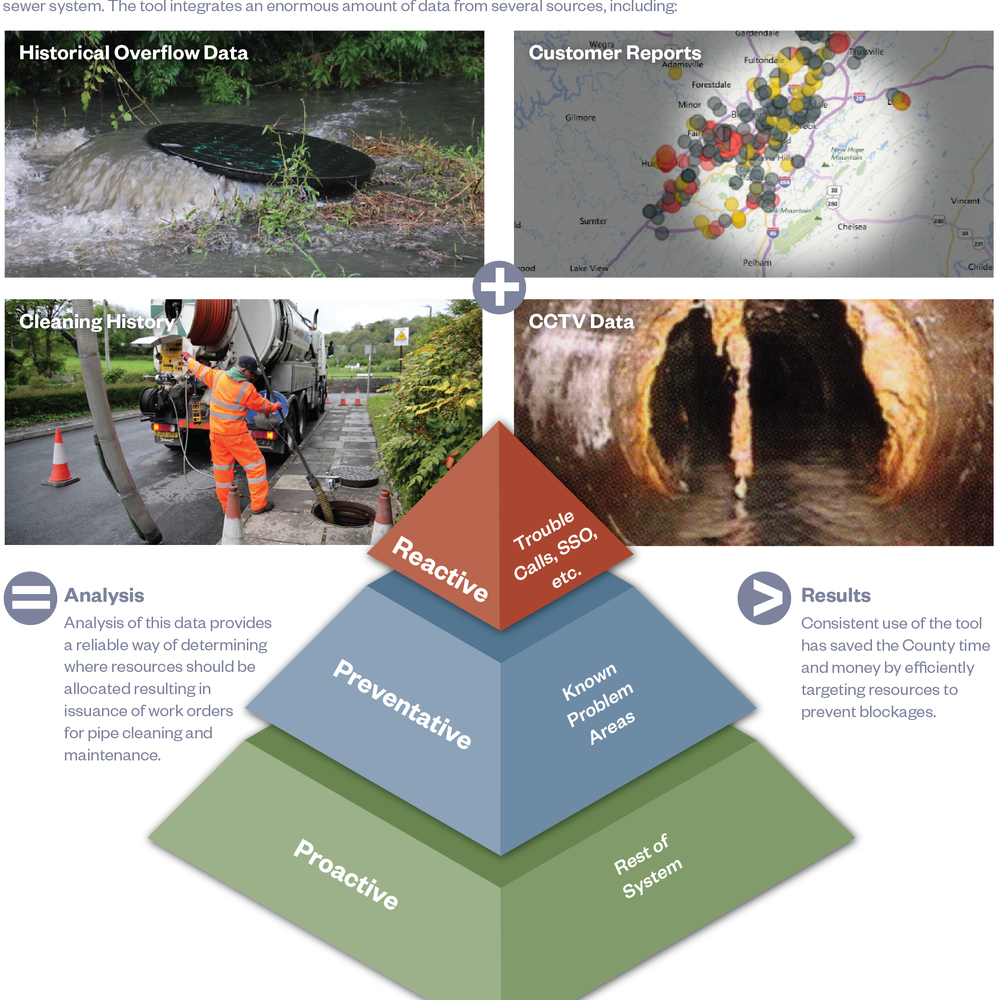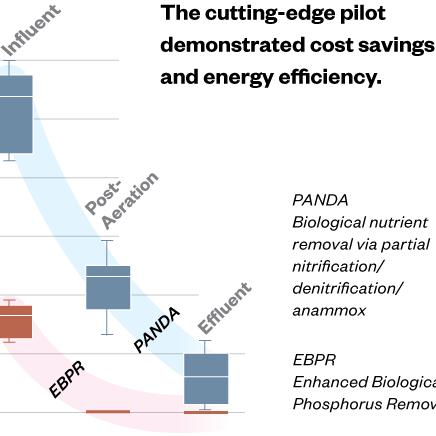Overcoming Obstacles at Terrible Creek WWTP Start-Up
Last Modified Jul 11, 2022
Objectives
This paper will present results from the start-up of a 3 million gallons per day (mgd) wastewater treatment plant in Wake County, NC. The facility expansion replaces a 1-mgd plant located on the same site. The increased capacity of the new plant triggered new NPDES permit limits, resulting in effluent ammonia limit being reduced from 2.0 mg/L to 1.0 mg/L at initial operation during the summer. Start-up of the new facility was to be accomplished by draining mixed liquor from the 1-mgd plant to the influent pump station for the 3-mgd plant. Several unusual obstacles required operations staff to quickly resolve issues and make process adjustments to discharge compliant effluent from the new treatment plant.
Background
The Town of Fuquay-Varina’s Terrible Creek Wastewater Treatment Plant (TCWWTP) was originally constructed in 1994 to provide wastewater treatment for 0.5 mgd. In 2001, it was expanded to 1.0 mgd. To meet the increased treatment requirements experienced as one of the fastest growing municipalities in North Carolina, the Town of Fuquay-Varina began construction in 2016 of a new plant adjacent to the existing facilities. The new facilities, including an administration and solids handling building, are available for all plant functions to provide 3 mgd of wastewater treatment with a planned expansion to 6 mgd. Three tanks from the original plant are designated for flow equalization and the remainder of the original facilities were demolished.
The -mgd plant liquid treatment process consists of mechanical coarse screening, influent pumping, mechanical fine screens, grit collection, biological nutrient removal tanks, clarification, disc filtration, and ultraviolet disinfection. Waste scum and solids are collected in a storage tank before thickening and dewatering by belt filter press systems. Other auxiliary systems (e.g. bulk chemicals, emergency power, etc.) are also located onsite.
The construction schedule of the new facilities was compressed to allow completion in 2018, resulting in groundbreaking to completion in less than two years for the new plant. Because existing plant operations were located onsite, start-up of the 3-mgd plant was facilitated by draining mixed liquor from the old plant to the new influent pump station, where it was combined with influent flow and sent to the new facilities.
Methodology
Start-up of the plant occurred during the summer, when stricter summer permit levels are applicable. With a typical influent flow of approximately 1.0 mgd and the larger aeration tank capacity of the 3-mgd plant, the start-up plan relied on the additional aeration retention time to ensure full nitrification was achieved to meet the ammonia monthly average limit of 1.0 mg/L (summer). Satisfactory effluent ammonia concentration was the primary goal as total nitrogen and total phosphorus limits are respectively annual mass allocation and quarterly average. By raising mixed liquor suspended solids concentration in the old 1-mgd plant prior to start-up, sufficient biological activity would be achieved in the new facilities without the need of seeding from an external source. Process sampling was also utilized to track performance through the treatment tanks. The-mgd plant was started with all available treatment tanks and clarifiers in service.
Findings
On the first day of start-up, the utility power feed to the site failed, causing the 1-mgd plant generator to start. The utility feed also affected the 3-mgd plant, so start-up was delayed until utility power was restored. To expedite the utility feed repair, only service to the new 3-mgd plant facilities was restored. Start-up of the new plant then proceeded immediately after power restoration, without the option to return flow to the old plant.
Draining of the mixed liquor to the new influent pump station was monitored to avoid creating significant flow spikes. As plant start-up continued, return of activated sludge was delayed to allow a blanket to build in the clarifiers as well as avoid the additional flow to the treatment tanks while the old plant continued to drain.
Operational strategies as well as control loop tuning were employed to correct dissolved oxygen variations. Chemical dosing was available to supply supplemental carbon, metal salt for phosphorus removal, and caustic solution to adjust alkalinity. Troubleshooting of pump and blower controls was required to address flow anomalies and aeration difficulties. As is common in most plant start-ups, equipment malfunctions were experienced. However, the process of correcting the equipment issues significantly affected plant systems, such as the loss of half the influent pumps for several days. In addition, at the 3 mgd permitted flow, the plant is not staffed at night or weekends.
Summary
The final paper will detail the start-up plan, unforeseen equipment issues, plant performance, and the actions taken to correct operations to efficiently start-up the new plant under more stringent nutrient limits.











